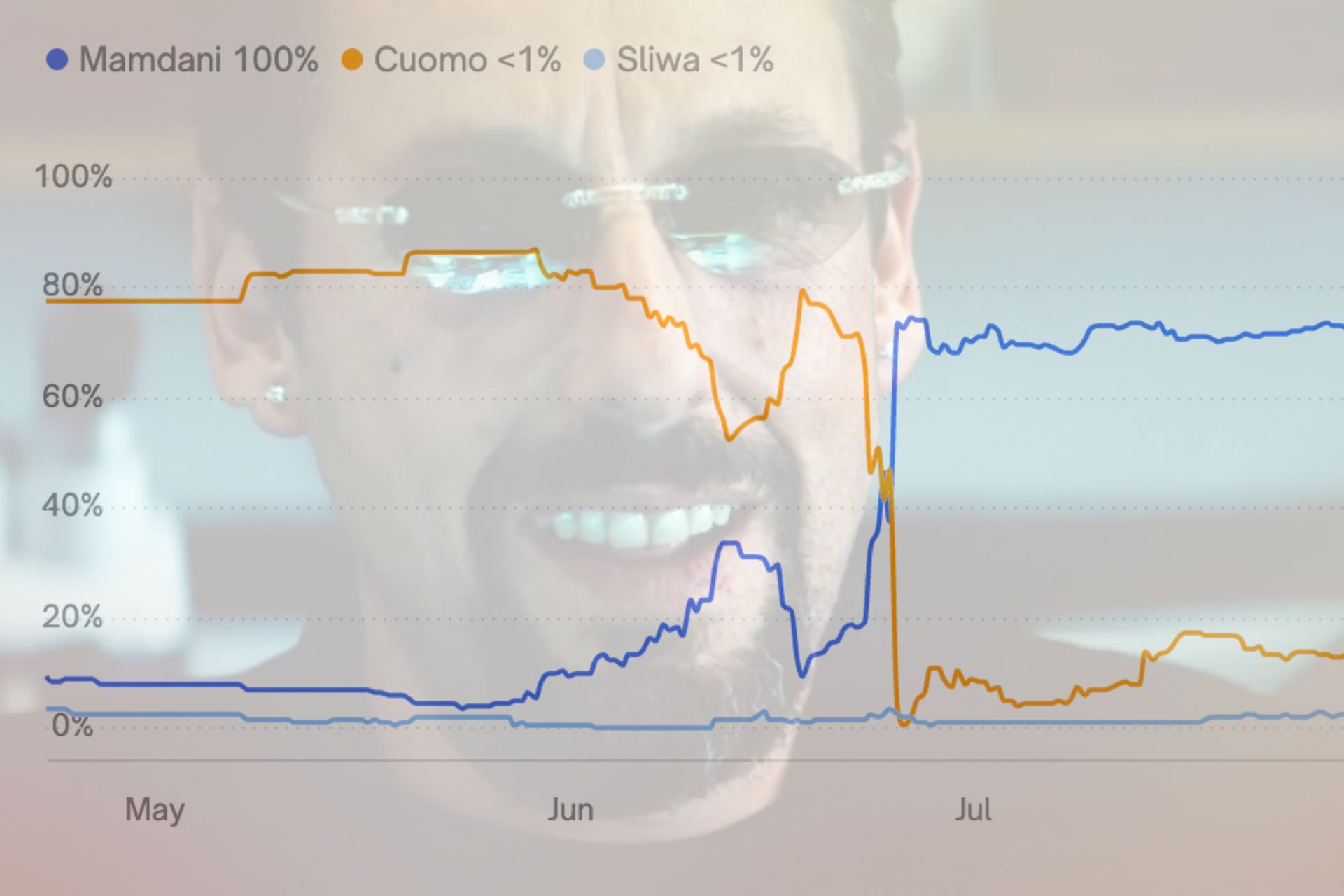- Magazine Dirt
- Posts
- The Signal is the Noise
The Signal is the Noise
The politics of prediction markets.

Nishanth Bhargava on how gambling on everything has shaped reporting.
Election Night, 2024. I sat on a friend’s couch as coverage began—we were all ready for a long night, waiting for results to roll in from an election that seemed like it would be decided by a razor-thin margin. But from the first hour, it was clear that the polling was off, and it was shaping up to be a disaster for the Democrats. Everyone in the room seemed disheartened, but none more than Ted, who was seething in the seat right next to mine. It wasn’t because he was a particularly political person. He had something else on the line—his money. I watched him grow more and more agitated as he refreshed Kalshi on his phone, watching the blue line sink lower and lower as the night went on. $500 on Kamala Harris, gone in an instant.
One year later, New York City’s recent mayoral election was one of the most expensive in modern history—for traders, at least. Between Polymarket and Kalshi, the race brought in roughly half a billion dollars in total trade volume—dwarfing even the most expensive Senate races in 2024, where top fundraisers like Sherrod Brown and Jon Tester raised just over $90 million. And the mayoral election was no aberration—as of September, Kalshi alone is pulling more than $1 billion in total monthly trade volume.
“Trust in experts has been eroded to the point where people trust prices more than pundits,” says Mickey Down, co-creator of HBO’s Industry. Fans of the show are still buzzing about an Uncut Gems-style bottle episode in the third season, in which the high stakes line between trading and gambling blurs for Pierpoint cad, Rishi Ramdani.
Unlike traditional sportsbooks, prediction markets have established themselves not merely as hubs of speculation, but purveyors of collective wisdom, capturing “reality” in a way that traditional polls can’t. But in the process of capturing that information, these markets also act back on reality and warp our relation to politics. As election betting becomes a larger and larger industry, it’s harder to delineate between market odds and reality. So when, in Baudrillard’s sense, does the map begin to precede the territory? It’s likely already begun.
The value proposition behind prediction markets is relatively simple. In the aggregate, rational traders can crowd out irrational ones to keep the market balanced; as live platforms, they can be more responsive to immediate fluctuations; and, of course, with skin in the game, traders are motivated to trade based on what they think will happen instead of what they want.
With skin in the game, traders are motivated to trade based on what they think will happen instead of what they want.
One of the first modern prediction markets came out of the University of Iowa in 1988 with the Iowa Electronic Markets (IEM). Over antiquated TelNet infrastructure, traders placed bets on whether America would choose more of the same with Republican George W. Bush or measured change under Massachusetts Democrat Michael Dukakis. Thomas Gruca, Director of the IEM, stresses that the point of the IEM “is for teaching and research,” contrasting their non-revenue model with the profit-taking strategy of their more recent competitors.
The leap of prediction markets out of academia and into the media spotlight is a product of the more general epistemic crisis gripping political analysts today. The original trauma here was, of course, the massive polling whiff of the 2016 election.
“We've been very let down by our real polling data, for a number of reasons that seem hard to reverse, so why not seek an alternative opinion platform with more accountability built in?” says Mary Childs, financial journalist and cohost of NPR’s Planet Money. And yet those offending pollsters stuck around. “There is little reputational cost for anyone being wrong these days,” says Joe Weisenthal—also a financial journalist, and host of Bloomberg’s Odd Lots. The masses have sought ways of bypassing the commentariat themselves by predicting the future with their dollars. This has already impacted political reporting.